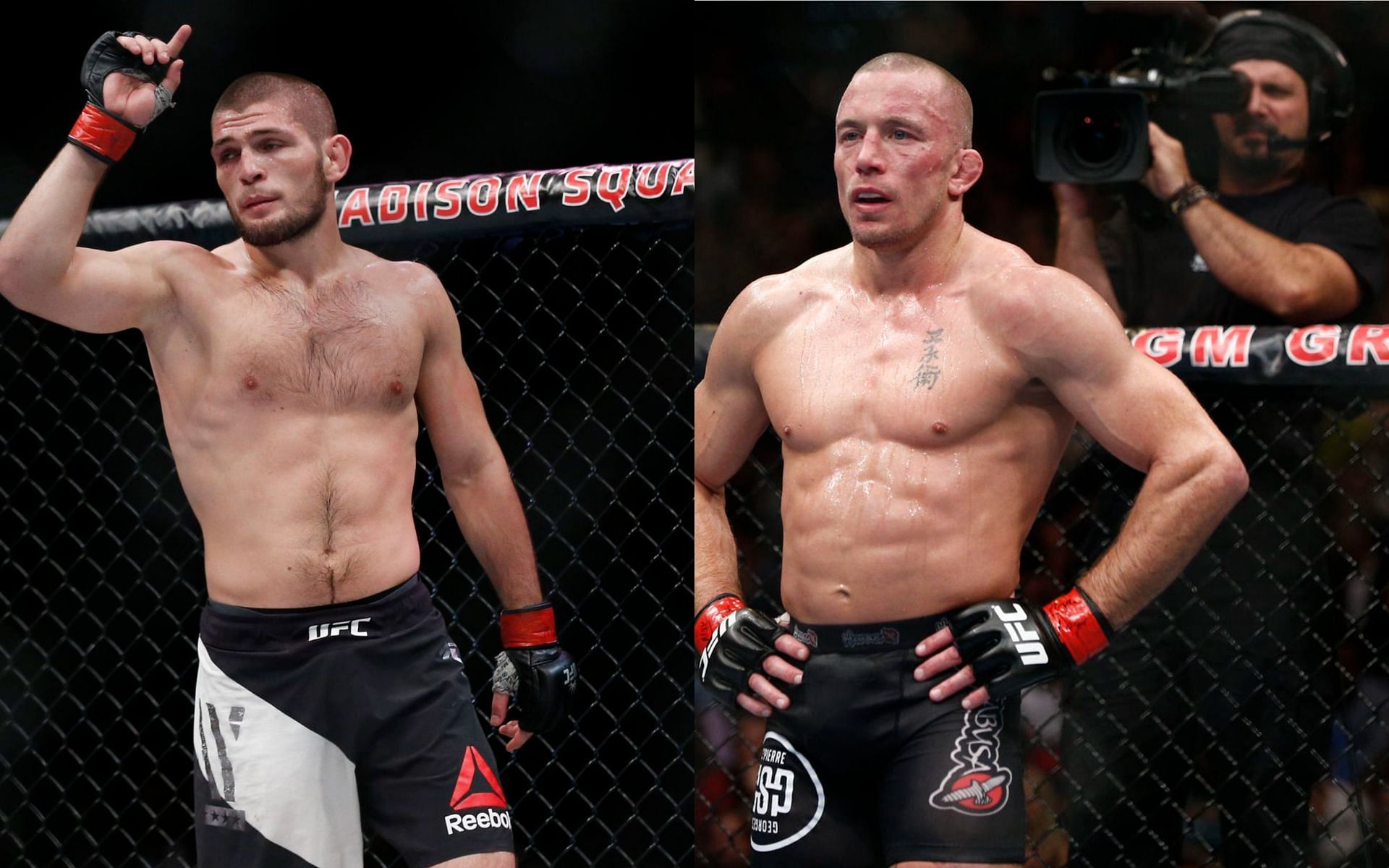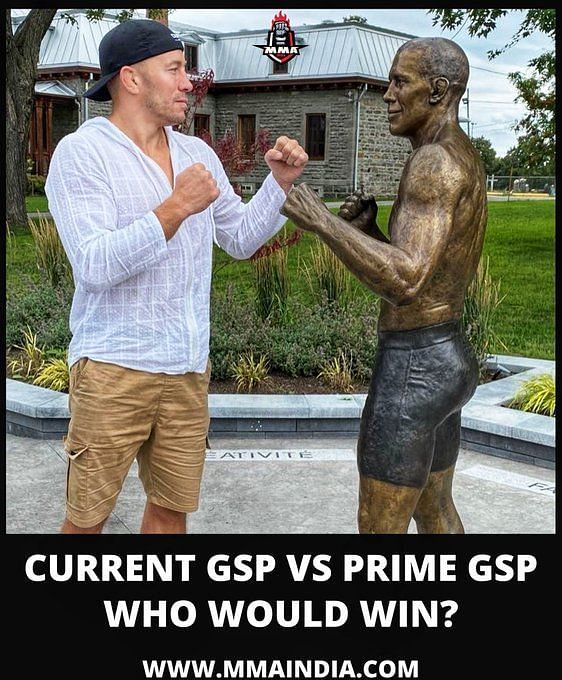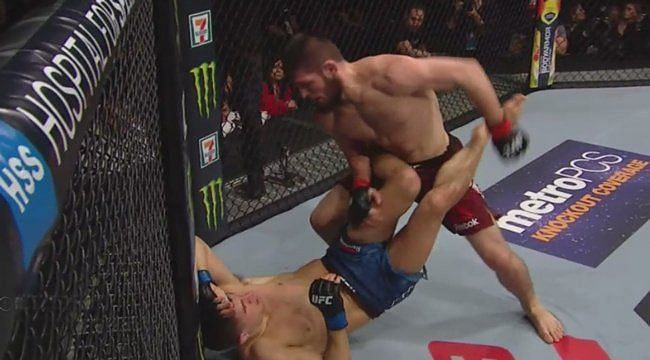
5 reasons why Khabib Nurmagomedov would have defeated Georges St-Pierre
Prior to his retirement from MMA, Khabib Nurmagomedov expressed his desire to face the legendary Georges St-Pierre in a matchup. According to Nurmagomedov, 'GSP' was his late father's favorite fighter. The gentlemanly manner in which the Canadian great conducted himself has earned him enormous respect in the sport.
The former UFC welterweight champion answered the undefeated Dagestani grappler's wishes in kind. He, too, wished to face the dominant lightweight in the octagon. For 'GSP,' the fight was his chance at achieving something no one else had ever managed in the promotion.
He once hoped to become the first person to hand Khabib Nurmagomedov a loss and capture an unprecedented third divisional title. However, there was good reason to wonder if St-Pierre would have defeated 'The Eagle.' This list outlines five reasons why Nurmagomedov would have bested 'Rush' instead.
#5. Georges St-Pierre was past his prime
The last time Georges St-Pierre stepped inside the octagon, he defeated Michael Bisping to capture the UFC middleweight title. While it was an impressive achievement for the former welterweight, it's important to note how beatable 'The Count' was when compared to other potential foes.
The Englishman was 38 years old, blind in one eye, and lacked the punching power to keep 'GSP' timid like a larger foe should. Khabib Nurmagomedov would have been a much stiffer test, especially considering their age difference. The interest in a bout between the two men peaked between 2019 and 2020.
Unfortunately, the former two-division champion was between 38 and 39 years old. His old age would surely have been a factor considering that 'The Eagle' was in his early 30s at the time. Being that close to 40 years old would have done 'GSP' no favors in terms of fitness against such an overwhelming physical force.
#4. Khabib Nurmagomedov was a different breed of wrestler
Georges St-Pierre is known for being one of the finest wrestlers in MMA history. However, the difference between the style of wrestling in MMA from the Canadian's heyday and the modern style of MMA wrestling are different. The wrestlers against whom 'GSP' prospered were more limited.
During his peak, having a good sprawl and defending a takedown was enough to neutralize a wrestler. Things have changed since. Chain wrestling has become the MMA wrestling meta, and 'The Eagle' was a master at it. It's not enough to stop Nurmagomedov's takedowns, one must also completely disengage from him.
Once the undefeated lightweight grabbed a hold of his opponents, it was the beginning of the end. For example, when the Dagestani phenom faced Conor McGregor, he chain-wrestled the Irishman. He dove for a very low single-leg takedown and secured a grip on his foe's ankle.
While 'The Notorious' pushed his own hips backward and wrapped his arm over his opponent's back to snap him down, it meant nothing. 'The Eagle' simply turned in at an angle to drive through and finish at an angle. The Irishman pushed off of his rear leg to defend that takedown, but Khabib Nurmagomedov kept his grip.
Once McGregor tried to stand, his foe simply held onto his leg and continued turning in at angles, forcing him to spin around to keep his balance. Eventually, McGregor lost his balance, and 'The Eagle' planted him on the mat. While the Irishman is certainly no 'GSP' in terms of defensive wrestling, this matters.
The Canadian's primary means of defending takedowns was having a good sprawl. While that was effective against the wrestlers of yesteryear, it was ineffective against chain wrestlers.
#3. The presence of the fence would have benefitted Khabib Nurmagomedov
It's not just takedowns that Georges St-Pierre would have had to fear from Khabib Nurmagomedov. The former 155 lbs champion made exceptional use of the fence in a way that was difficult for his opponents to contend with. He often pressured his foes until they were sandwiched between him and the fence.
He'd follow that up by shooting for takedowns against the fence. Whether he successfully completed his takedowns was redundant. The point was to force his opponents into a compromising position where they're constantly losing points and the fight as a whole by keeping them on the defensive.
He pinned his opponents against the fence by shoving the top of his head against their chin. This broke his foe's posture and exposed their chin to punches. He'd alternate between dropping low for a takedown to force his foe to hand-fight. If his opponent took the bait, Khabib Nurmagomedov would punch their exposed head.
If they tried to defend takedowns by fighting his grip, he'd land punches. If they tried raising their arm to block punches, they'd concede takedowns. This trapped many of his opponents against the fence. Even worse, if they were taken down but managed to scale the fence to stand up, they were still trapped against the fence.
This was the reality that Dustin Poirier faced when he faced the Russian grappling phenom. In his older age, 'GSP' would have had a very difficult time warding off the Russian's pressure and staying off the fence.
#2. Khabib Nurmagomedov had a different ground game
While Georges St-Pierre faced his fair share of wrestlers throughout his career, he never dealt with an opponent who had a fully realized ground game. Nick Diaz and B.J. Penn possessed elite-level Brazilian jiu-jitsu skills on the mat but nothing that synergized their grappling and ground-and-pound.
This is different from what 'The Eagle' forced his opponents to experience. Khabib Nurmagomedov had a ground game designed to punish his foes in every area. First, he made it extremely difficult for his opponents to stand up. He wrapped his legs around his foe's own and raised their ankles off the mat.
If he couldn't do so to both of their legs, he'd triangle one of their legs. Regardless, it made it extraordinarily difficult for his opponents to stand up after being dragged down to the mat. Additionally, 'The Eagle' secured a single wrist grip on his foes and tugged one of their arms under them, trapping one of their hands.
Even if he wasn't able to trap one of his foe's hands under them, he maintained his wrist grip to neutralize that arm. In such a position, he landed several brutal strikes while triangling their legs to stop them from threatening him with submissions. Alternatively, his ground-and-pound created openings for his own submissions.
#1. The matchup would have taken place at lightweight
Around the time the bout was being considered by the UFC, it would have occurred in the lightweight division. Georges St-Pierre was interested in accomplishing a goal that every 155'er had failed to achieve, i.e., defeating Khabib Nurmagomedov.
Furthermore, 'GSP' sought to become the first three-division champion in UFC history. Unfortunately, cutting down to 155 lbs might have ended disastrously for the Canadian great. Not only was St-Pierre a lifelong welterweight, but he had also recently bulked up to middleweight at the time.
Given that he was nearly 40 years old, it would have been even more difficult since it becomes significantly harder to lose weight past one's mid-thirties. The lightweight division would've been untested water for 'GSP,' and it might have depleted him in a manner similar to T.J. Dillashaw's ill-fated flyweight debut.
If the weight cut, in any way, negatively impacted him, he would've lost. The dehydration could have left him weaker, slower, and more brittle. Miesha Tate experienced similar effects in her women's flyweight debut. A suboptimal 'GSP' would not have defeated an optimal Khabib Nurmagomedov.


